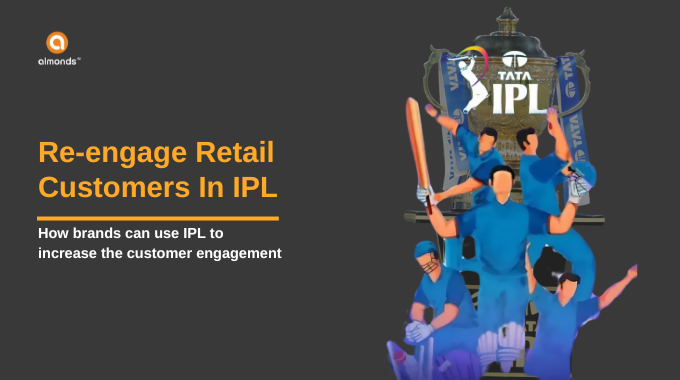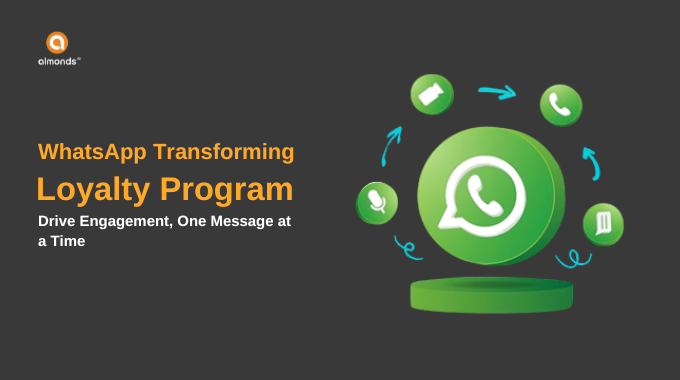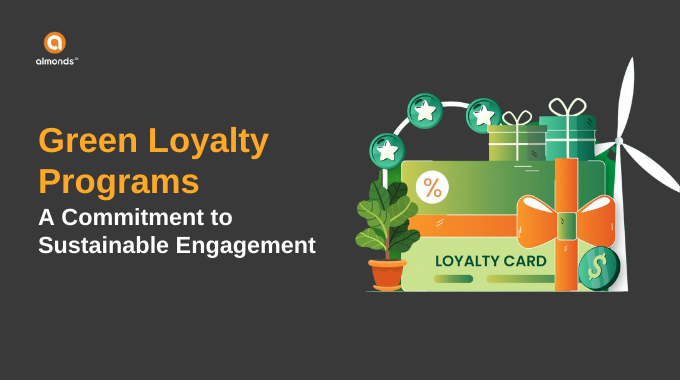Loyalty programs are essential tools for building customer retention, especially as businesses adapt to an evolving, tech-driven marketplace. As we move into 2025 and beyond, loyalty programs are expected to see a surge in growth, with industry trends pointing toward mobile-first engagement, AI-driven personalization, gamification, and sustainable practices.
The Growing Market of Loyalty Programs
The global loyalty programs market is forecasted to grow significantly in the coming years, with an expected 13.4% annual growth rate, reaching a market size of $155.22 billion by 2029. With consumers increasingly seeking personalized experiences and brands striving for more engagement, the adoption of loyalty programs will continue to rise. Particularly in emerging markets, brands will focus on digital-first loyalty systems, mobile apps, and real-time, data-driven engagement to attract and retain customers.
India, for example, is experiencing a surge in loyalty program adoption as brands use data to personalize rewards and offer seamless customer experiences across digital platforms. The shift to digital-first solutions allows businesses to provide a better experience to the growing tech-savvy population. More businesses are tapping into e-commerce loyalty programs, integrating mobile wallets, gamified loyalty points, and AI-driven rewards into their customer engagement strategies.
1. Digital-First Loyalty Programs Lead the Charge
The use of mobile-first loyalty programs has dramatically transformed customer engagement. Consumers expect seamless experiences on their smartphones, where they can track rewards, redeem them easily, and receive personalized offers. As smartphones continue to penetrate markets globally, more businesses are adopting app-based loyalty systems, which provide an efficient and user-friendly way to engage with customers.
For instance, popular retailers are embracing digital loyalty solutions, allowing customers to access rewards directly through mobile apps. The widespread use of mobile payments and the rise of digital commerce has made integrating real-time loyalty programs more vital than ever. These solutions make it easier for businesses to enhance customer satisfaction, increase loyalty, and boost repeat purchases.
2. The Rise of Gamification in Loyalty Programs
In response to growing consumer demand for more engaging experiences, many brands are incorporating gamification into their loyalty strategies. Gamification can transform a standard loyalty program into an interactive, fun experience for consumers.
Consumers, particularly Millennials and Gen Z, are drawn to gamified experiences that allow them to earn rewards through engaging activities like check-ins, challenges, and competitions. Retailers worldwide are introducing interactive elements such as spin-to-win mechanics, leaderboards, and milestone-based rewards to boost customer engagement and retention. Gamification not only increases participation but also builds a deeper connection with the brand.
As seen with popular e-commerce and retail platforms, these game-like features create a sense of achievement for customers, encouraging them to stay loyal and make repeat purchases. The success of such programs across industries suggests that gamification will continue to grow as a cornerstone of customer engagement.
3. Coalition Loyalty Programs
A Multi-Brand Approach to Customer Engagement
Coalition loyalty programs, where multiple brands collaborate to offer shared rewards, are becoming increasingly popular. This model allows customers to earn and redeem points across various sectors, from retail to travel and dining. The appeal of coalition programs lies in their flexibility, as they offer customers the opportunity to use points across different brands rather than being confined to a single retailer.
Brands in India and globally are embracing coalition loyalty programs to increase customer engagement. For instance, cross-industry partnerships allow customers to earn rewards not just from their favorite stores but also from dining, travel, and fuel purchases. This flexibility boosts the program’s value, leading to stronger customer loyalty and enhanced brand relationships.
As more industries look to integrate loyalty rewards into their ecosystems, coalition programs are set to grow, offering customers more opportunities to engage with brands and redeem their points across multiple platforms.
4. AI-Driven Personalization
The Key to Customer Retention
Personalization is becoming a must-have feature for loyalty programs. AI-powered solutions are transforming how brands engage with customers by tailoring offers based on individual preferences and behaviors. AI-driven analytics enable brands to provide personalized discounts, offers, and recommendations, which not only increase engagement but also drive more repeat purchases.
Loyalty programs that leverage AI can anticipate customer needs and deliver rewards that resonate on a personal level. Data collected from previous interactions, purchases, and browsing habits can be used to create hyper-targeted campaigns that keep customers engaged and loyal.
In emerging markets, particularly in India, AI-powered personalization is gaining traction as companies aim to offer hyper-relevant rewards based on customer behavior. Brands that adopt AI tools to personalize loyalty rewards will have a distinct advantage in maintaining long-term customer relationships.
5. Sustainable Loyalty Programs
Meeting the Demands of Eco-Conscious Consumers
As consumer awareness of sustainability grows, brands are incorporating eco-friendly incentives into their loyalty programs. From offering carbon offset rewards to discounts on sustainable products, brands are aligning their loyalty strategies with sustainability goals.
In India, as well as globally, consumers are increasingly motivated by ethical considerations. Brands that reward sustainable choices are not only fostering customer loyalty but also positioning themselves as leaders in corporate responsibility. Loyalty programs that support green initiatives will likely see higher participation rates, particularly among environmentally conscious consumers.
6. Financial Inclusion
Leveraging Loyalty to Promote Digital Payments
In regions like India, where financial inclusion remains a key focus, loyalty programs are playing a role in encouraging the adoption of digital financial services. Loyalty initiatives are being integrated with mobile wallets and digital payment platforms to incentivize consumers for making digital transactions.
By rewarding consumers for using mobile payment services, brands are driving customer adoption of digital financial tools. This approach helps bridge the gap for underbanked populations and creates new avenues for customer engagement in emerging markets.
7. The Future of Loyalty Programs
A Blend of Innovation and Personalization
As the loyalty landscape continues to evolve, businesses are investing in innovative technologies to enhance customer engagement. AI, blockchain, gamification, and mobile-first platforms are reshaping loyalty programs, enabling brands to build deeper connections with consumers.
The future of loyalty programs lies in offering seamless, personalized, and engaging experiences across digital and physical touchpoints. Brands that adapt to consumer preferences and leverage data-driven strategies will be well-positioned to lead in the competitive loyalty landscape.
Conclusion
The loyalty programs market is poised for significant growth, driven by emerging trends such as gamification, AI-powered personalization, coalition programs, and sustainability-linked incentives. Brands that invest in these innovative strategies will not only drive customer retention but also build stronger, more personalized relationships with their customers.
To remain competitive, businesses must continue evolving their loyalty programs to meet the changing expectations of customers. By embracing new technologies, data-driven insights, and customer-centric approaches, brands can position themselves for long-term success in the loyalty market.










